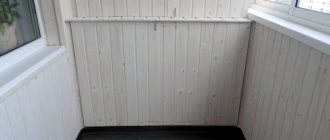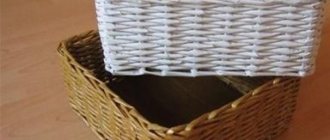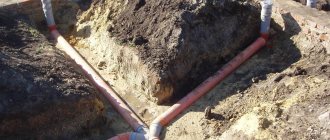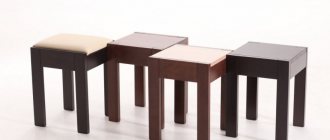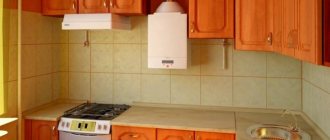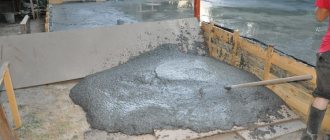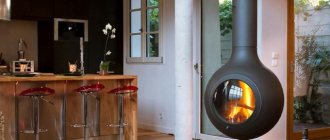Requirements for working with gas pipes
Reconstruction should be carried out with caution and in compliance with technical operating standards:
It is prohibited to carry out construction work on the transfer of communications yourself. It is necessary to obtain special permission and carry out repairs in the presence of a specialist. If these standards are neglected, an emergency situation may arise. Important: moving the gas pipe in the kitchen on your own without permits is prohibited.
Gas pipelines should be repainted periodically to increase service life and prevent corrosion.
If a box is designed on top of the pipes, then it is necessary to maintain the possibility of quick access to them.
The design of the box must be provided with ventilation. The photo of a gas pipe in the kitchen shows several shelter options with the correct and dangerous decoration solution.
Requirements for internal gas pipeline communications
Everyone knows the danger of gas leaks, which lead to catastrophic consequences: poisoning, explosions of apartments and houses. Therefore, increased safety requirements are imposed on gas pipeline networks, including the internal pipeline. Before hiding gas pipes in the kitchen, the user should know the following regulatory requirements given in SNiP 2.04.08-87 for gas supply and SNiP 42-01-2002 for internal gas pipelines:
- All work on moving pipelines or changing their configuration must be carried out by operational services that provide maintenance services in accordance with agreements concluded with the consumer.
- Internal gas pipelines must be made of metal pipes with permanent connections, usually welded. The use of detachable (threaded) connections is permitted when connecting gas-consuming equipment, fittings and instrumentation to the pipeline.
Rice. 2 Gas pipes made of different metals
- A metal gas pipeline can be connected to gas-consuming equipment using flexible hoses that are resistant to pressure, temperature parameters of the gas and the environment.
- SNiP 42-01-2002 answers the question of whether it is possible to hide a gas pipeline in wall or floor structures. The document allows the laying of gas pipes in an open or hidden way in the wall. When carrying out hidden installation, additional measures must be taken to protect the gas pipeline from corrosion. Also, access to the pipeline for inspection and repair must be free.
- It is worth noting that in accordance with SNiP 2.04.08-87, hidden installation is allowed in wall grooves covered with ventilated panels. Exceptions are gas pipelines for liquefied gas or those laid inside residential buildings and public buildings.
- Installation of gas pipeline fittings in channels or wall grooves is not allowed.
- The gas pipeline is laid in non-residential premises; its installation in bathrooms and residential rooms is prohibited.
- Regardless of the installation method, all internal gas pipelines must be painted with waterproof paints and varnishes.
Rice. 3 Examples of pipeline painting to match the interior color
Related article:
Is it possible to place a refrigerator next to a gas pipe, what will a specialist say ? If you are planning or doing renovations and are thinking about how to hide a gas pipe in the kitchen, then it may also be interesting to read about the norms and distances for the location of household appliances and furniture from the gas pipe.
Finishing materials for camouflage
Various materials and means are used to camouflage a gas pipeline. They have special requirements:
- Lightness of design. The box should not be too massive, weigh down the communications, so as not to lead to their destruction. For finishing, wooden slats, lining, drywall, natural materials, galvanization and metal guides are used;
- The fixation of the camouflage cover must be reliable and durable, and can be easily and quickly removed. Attached structures are used, on self-tapping screws, with an opening door;
- The coating must be moisture resistant. This requirement is met through the use of water-repellent materials or the use of paints and varnishes.
Decoration methods
On the Internet, on various construction sites, there are a lot of different ways to hide a gas pipe in the kitchen.
Recommendations from experts will help you build an original structure with your own hands easily and quickly from scrap materials. Gas pipes are in the way in the kitchen, then we present several simple ways to decorate them.
Dependence of choice on various factors
To decide on the method of decorating a gas pipe in the kitchen, you should consider some factors:
- gas pipe mounting location;
- features of the room layout;
- desired style;
- resources intended to solve the problem.
The most popular methods are presented below.
Wall structures
One of the popular ways to hide a gas pipe in the kitchen is a wall cabinet based on the design of the furniture set. From the outside, it looks like an ordinary box for storing household small items, does not have a back wall, a front door that opens completely, and is no different from the rest of the furniture.
You can order such a device together with the entire set at the design stage or separately, maintaining the style of the room. The cabinet is securely and firmly attached to the wall using anchors or runners and is a non-removable structure.
Wardrobes and wall cabinets
The convenience of using the furniture is that the cabinet is already equipped with a door. In addition, the set is a general style and the absence of additional alien elements in the interior.
To disguise communications, a separate locker is allocated and nothing else is stored or stored in it. The cabinet must be mounted on the wall and very secure.
All the owner needs to do is make pipe-shaped cuts in the horizontal walls and shelves, and also remove the back walls.
It is most convenient to saw through semicircles with a jigsaw, and the markings can be applied using a template.
You can build a cabinet from chipboard yourself if new furniture is not planned in the near future.
Hiding a gas heater or a small gas boiler in furniture is not the best solution, since this will not provide the gas flame with sufficient air flow.
Overlays
You can use decorative overlays. These are removable, small boxes that provide access to communications at any time. From the outside, they can be decorated at will to match the overall design of the room or to create contrast.
Note!
- Kitchen with gas stove: design features, photos of the finished renovation
How to make a kitchen with your own hands - examples of beautiful and modern renovations
- Assembling a kitchen - step-by-step DIY assembly guide, necessary materials and tools
An alternative to the box can be attached shelves and cabinets with drawers that can be moved to the side as needed. Or, as an option, use separate, open shelves attached to the wall just below the pipe location.
They display bright, colorful household items for spices. Thus, by focusing on colorful decor and masking communications, you can make the kitchen interior more attractive.
Methods and tricks for masking a gas pipe
Since it is unacceptable to change the position of the pipes yourself, it is worth trying to hide them using decorative techniques.
We recommend that you read: Why pressure drops occur in heating systems and how to deal with it
Painting
The standards regulate the coloring of external gas pipeline pipes; they must stand out and therefore, according to the requirements, have a yellow color. But there are no such restrictions for pipes laid indoors.
Painting pipelines running along the wall is the most cost-effective, easy-to-implement and practical way to camouflage a pipeline, especially if you paint them in a color that is in harmony with the surrounding finish, or, conversely, that stands out against the general background, creating a deliberate accent.
A universal painting method is to cover the pipes with paint to match the walls. It is especially good if the walls are lined with wallpaper for painting. In this case, there is no need to select the desired shade.
If the kitchen is filled with colorful, eye-catching items, it makes sense to decorate the pipes with a contrasting color palette.
Important! To ensure that all components of the room are in harmony, create comfort and are unobtrusive, it is better not to use more than three shades in the interior.
The bright color of the pipes can be skillfully combined with the decoration of furniture facades, floor tiles, textiles and more.
Pipelines are often coated with metallic, silver, black, because this is how most household appliances are designed, and in addition, this method is ideal for kitchens in high-tech, loft, and modern styles.
The last, most difficult, but attractive way is artistic painting. On the surface of communications you can display a pattern or pattern that repeats the image on curtains, wallpaper, or tiles. This is done using stencils, acrylic paints, or using the decoupage technique.
Pipes can be decorated with original elements that can add zest to the entire room. This option will successfully complement a country or Provence style kitchen. Pipes with a finish that replicates the texture of wood - birch or bamboo - look unusual.
Before application, it is advisable to prepare the surface of the pipes - sand, clean, apply a primer, then the compositions will adhere better and last longer.
It is important! Some owners use ropes, magnets for decoration, and cover pipes with film. These methods may cause criticism from gas services, since the decoration material should not weigh down the pipes and complicate access and ventilation, when the slightest leak can be fatal.
Disguise as a roof rail
Imitating roof railing is the most successful way to disguise prominent pipes. But if hooks for various kitchen utensils are usually hung on the roof rails, then the pipe should remain free.
We recommend that you familiarize yourself with: Types of HDPE couplings and features of their installation
Most often, the roof rails in the kitchen are made in bronze, copper, silver, and the pipe is painted in the same color; if it runs horizontally along the wall, then by placing the roof rail below the pipe, you can create the impression of a successfully executed composition.
Laying pipes above furniture
Horizontal sections of the gas pipeline can be hidden above the furniture.
Another option is to place shelves for kitchen utensils under the pipe. Pots, plates, jugs will cover the pipe and make it invisible if it is painted to match the walls.
Placing pipelines inside furniture
When ordering a modern kitchen from a designer, you can pre-provide cabinets with cutouts for the gas line and equipment and doors for easy access. This way it is easy to hide both the horizontal and vertical parts, as well as hide the counter inside.
At the same time, it is quite possible to fully use the furniture by using it for kitchen utensils. In old furniture, skillful owners cut out holes for pipes themselves.
Note! The main condition is to maintain constant ventilation and, if necessary, quick and easy access to communications.
Practical guides
Another great idea to divert attention from the pipes is a railing system. Metal, cylindrical slats are hung horizontally along the work wall and hold kitchen utensils on special hooks.
Painted the same color as the gas pipe, they create the impression of two parallel rails and do not create the feeling of a technical room with a pile of various devices. Simple and concise.
Ways to disguise a gas pipe
Now let's look at several original and not so original ways to decorate a gas pipe. All options will be provided with photographs for clarity, and step-by-step implementation instructions will be added if necessary.
Pipes can be simply painted
The pipe is painted to match the wall trim
Have you ever wondered what makes us pay attention to certain things? What makes them stand out from the crowd we see? Of course it's a contrast. By default, all gas pipes in the house are painted in one color, which is clearly not chosen by the designer, and it almost always looks unattractive. If this color contrasts with surrounding objects, furniture and wall decoration, then the gas pipe will always be noticeable. No one forbids repainting it in any other color, for example, to match the finish. Do this, and you may no longer want to hide the pipe from view.
The wall and the pipe are painted with the same paint - if not for the play of light and shadow, they would simply merge together
How can you paint a pipe to make it less noticeable?
- The easiest way is to choose the same paint that was used to decorate the walls, or simply select the desired option to match the color of the finish. The more accurately the color is selected, the less noticeable the detail will become. The surest option is a white wall and a white pipe .
The color of the gas pipe echoes the ventilation corrugation, plumbing, handles of the gas panel and oven - everything looks natural and harmonious
- Oddly enough, in some situations contrast will also look advantageous . Of course, it won’t be easy for us amateurs to get it right, but a professional designer can easily cope with the task. This solution is suitable for interiors that use a large number of variegated color spots. We paint the pipe in the color of some element and fit it into the general contrast prevailing in the room. Such an element can be anything, but only something not too small. For example, curtains, kitchen units and decor already in the room are perfect. Styles for which such a solution would be appropriate are boho, avant-garde, kitsch, hi-tech and others. In the latter case, it is recommended to paint the pipe in a metallic color.
There are no limits to creative thought, but not all decisions will be approved by gas services
- Another interesting way of painting is artistic painting . This also includes decoupage. It is definitely suitable for creative people who do not like everyday dullness. With the right approach, pipes can turn into real works of art. This solution is suitable for interiors that contain various ornaments, patterns of different themes and combinations of different types of finishing materials. The pattern on the pipes repeats the patterns already existing in the room, and, of course, the tones too. The photo above shows several options for decorating gas pipes. They all look beautiful, but we wouldn’t advise anyone to wrap them with ropes and cover them with pebbles.
Real colorful boa constrictor
- We can apply the drawing using a stencil or by hand , depending on who has the skill and imagination. You can decorate a pipe in this manner under the trunk of a bamboo or birch tree.
- Decoupage is the transfer of a design from a special film or thin napkin to a surface. This approach will allow you to create an almost professional drawing in the shortest possible time.
To paint a gas pipe, you can use acrylic and oil paint, as well as nitro enamel. When working with the latter material, it is necessary to ventilate the room well.
Radiator paint
Radiator paint would be an excellent choice. Its composition is chosen so that it dries very quickly and has virtually no odor. These factors are very important when decorating a kitchen. As an option, you can use water-based paint, but only to cover most of the pipe in order to disguise it as wall whitewash.
Want to hide pipes in your bathroom? A special article will help you in choosing a material, a method for closing pipes, as well as step-by-step instructions for covering pipes with plasterboard.
Prices for different types of construction paints
Construction paint
Video - Kitchen renovation. We hide the gas pipe. Laying tiles on the backsplash after installing the kitchen
To paint a pipe efficiently, you will first need to prepare it. To do this, the old coating is removed. This is done in different ways, depending on the type of old paint and the tool you have - some just need to be sanded, others are washed off with special solvents, others need to be heated with a hairdryer and then scraped off. Then the pipe is primed and only after that new paint is applied, which will now lie smoothly and beautifully.
The play of colors in small interior details can add charm to the entire room
Depending on the type of design you are applying, you can work with brushes or a spray can - the latter is ideal for stencils.
Decorating pipes with various objects can also be attributed to this technique, but we repeat that the use of non-standard materials, which can also block normal access to equipment, may not be approved by gas services.
Find out how to renovate a kitchen in a Khrushchev-era building, and also read the step-by-step instructions in a special article on our portal.
Railing as a way of decoration
Gas pipe disguised as a roof rail
The intricate English word railing means, within the kitchen, horizontal guides (bars) on which various kitchen utensils are hung. Of course, nothing can be attached to the pipe itself, but nothing prevents us from creating the illusion that this is not a gas pipe at all, but an empty rail.
To implement such an idea, we will need to purchase a roof rail and paint of the same color as it itself. These devices are most often made of copper, bronze, chrome or brushed stainless steel. The photo above shows an interesting black version that goes perfectly with the loft interior style that reigns in the room.
Example of a chrome roof rail
Next, the optimal position of the railing relative to the pipe is selected - it should either become an illusion of its continuation, or be positioned separately, forming some kind of geometric design.
After this, various bowls, ladles, mixers and other kitchen utensils are hung on the rail through hooks, and the pipe itself is left free. Due to the same style of details, the composition will be visually beautiful and holistic. This technique will fit well into popular modern interiors.
Furniture for masking pipes
Massive shelves will cover up ugly pipes well
In many houses and apartments, gas pipes can stretch horizontally several meters in length. This arrangement is actually very inconvenient, as it can interfere with the installation of cabinets. Resourceful people have found a way out here too - to make good use of the space and at the same time decorate the room, there is a long shelf directly under the pipe on which you can place dishes. The vertical parts of such pipes can be disguised as racks holding the shelf - here, first of all, you need to look at the specific solution, the furniture used and the dimensions of the kitchen.
If the pipe runs completely under the ceiling, then a whole system of cabinets, full and small, can be placed under it. This method of hiding a pipe will be simply ideal, since all conditions for access to it and ventilation are met.
Video - Simple complex kitchen, gas pipes and false wall
Furniture facades masking pipes
Perfect concealment and quick access
Perhaps the most beautiful, but at the same time the most expensive, method of masking will be in which the pipes remain inside the cabinets. To implement such an idea, you will need to involve employees of companies engaged in the manufacture of custom-made furniture. They design the set in such a way that it can be installed in non-standard conditions, and through its individual parts, that same ill-fated pipe is passed inside.
In essence, such cabinets are boxes with doors, without a top cover or a back wall. In the existing shelves, grooves are cut for the pipes so that they do not interfere with installation.
Neat and beautiful
If you wish, you can modernize any cabinet you have in this manner, except those with glass doors. Vertical sections are hidden in pencil cases, while horizontal ones can remain above the furniture, as in the previous chapter, or go through all the cabinets. In the latter case, you should think several times before implementing this, since loaded furniture can also become an obstacle to access to communications.
Find out how to connect a gas stove and where to go, and also read the design rules in a special article on our portal.
Open design
The design of a kitchen with a gas pipe can be made in different styles, using various technologies and decoration methods. Some designs, on the contrary, emphasize the presence of communications (techno, hi-tech, futurism), where the presence of shiny, chrome-plated surfaces is only welcome.
Note!
How to choose a kitchen - reviews of stylish kitchen design, interior styles, new designs (photo + video)
Kitchen designer: purpose of the program, operating rules, pros and cons, secrets of arranging objects in the kitchen
- Bar counter height: types of counters, calculation of dimensions, standard sizes, reviews of modern solutions (photo + video)
Open communications can be discreetly hidden without constructing massive boxes and without incurring high costs. The main direction in the technique is to give the pipe a look that will merge with the overall interior or play up the contrast in an original way. Using the same principle, completely opposite effects can be achieved.
For example: ordinary painting without additional decor in one color. You can choose a color that will blend into the general background, and the pipe will not stand out. Or you can choose a contrasting, bright color and the pipes will turn into a decorative element. There are many ways to hide a gas pipe in the kitchen.
Methods for masking pipes
There are several ways to solve this problem:
- cover the gas pipeline with kitchen furniture. Behind the wall cabinets of the kitchen unit you can completely hide both the pipes and the gas water heater and meter. To do this, dismantle the rear part or remove the side wall of the cabinet. The meter and gas pipe will not take up the entire volume inside the cabinet; there will still be enough space left to store kitchen utensils or food. For a disguise option using wall cabinets, watch the video:
- install a box made of plastic, plasterboard, polycarbonate or chipboard. The box is a lightweight structure that is mounted on a metal frame profile and guides. Its installation will cost less than purchasing a new kitchen set;
- use a railing system. The railing is used to disguise the gas pipe when it runs across the entire width of the wall at the level between the countertop and wall cabinets. This makes it possible to use it as a hanging structure for placing light kitchen utensils, hooks, shelves and drying racks on it. In this case, the pipe is cleaned to a shine, and then covered with chrome paint in several layers;
- decorate pipes. Masking in this way does not require the creation of any structures from various materials, inside of which elements of gas communications will be located. To paint a gas pipeline to match the furniture or wallpaper, you can use any waterproof paint, and also apply decorative painting to the surface of the pipes.
Which way is better
The simplest, most economical and optimal from a safety point of view for masking gas pipes is the decoration method. In this case, there remains free access to the gas communications for preventive inspections and maintenance.
In addition to budget painting, you can use various improvised means and modern finishing materials to decorate gas pipes:
- cardboard sleeve;
- decorative painting;
- interior mosaic;
- wallpapering the pipe;
- decoupage method;
- twine or twine;
- bamboo panels.
Decorating pipes
The decoupage technique is familiar to many as a simple and picturesque design of stretchers and notepads. More massive objects can be decorated in the same way. To decorate the pipe you will need:
- Dye. Use oil, acrylic with a glossy or matte effect;
- PVA glue;
- Paper napkins. Select a design that matches the general atmosphere of the room, matching the colors and images with the wallpaper and wall decoration. You can use special paper for decoupage with a ready-made design or order an original image;
- Acrylic lacquer. Different effects can be obtained from using a material with different components.
Detailed description of the work
Step 1. Give the pipe the desired background. Paint in your chosen colors. After complete drying, the subsequent finishing begins.
Step 2. Cut out the motifs you like, separate the top layer of the napkin with the pattern. First apply it to the place and apply marks.
Step 3. Coat the cleaned, degreased surface with glue. Apply the design and secure on top with another layer of glue. For decoupage, use an adhesive-based mixture diluted with water in the ratio: 2 parts PVA + 1 part water. The completely decorated pipe is left for several hours and allowed to dry thoroughly.
Step 4. Apply several layers of varnish on top, allowing each layer to dry. The number of layers is from 2 to 10. This surface is easy to clean and the pattern is not distorted.
Hand painted
If you are good with a brush and drawing skills, you can make an interesting pattern that emphasizes the style of the kitchen. The gas pipe in the kitchen in Khrushchev is located in a remote, protective place and does not interfere with the work process.
Initially, a general background is applied that harmoniously combines with the design. And then they draw patterns and ornaments in the design style. These can be floral motifs, geometric patterns, images of fish, animals.
Thematic patterns reminiscent of Khokhloma, Indian ornaments, oriental zigzags will create a unique atmosphere in the room. For painting, acrylic paint is used, which can be coated with a varnish layer on top for greater durability.
Natural materials in the interior
The latest design trends include the use of natural materials. How to close a gas pipe in the kitchen using environmentally friendly components can be found on the pages of the site. Bamboo canes are widely used.
You can build an attached box from slats or select a suitable stick of large diameter from 20 cm. It is split in half, the edges are processed, cut to the height of the pipe and fixed in place.
The material is moisture-resistant, wear-resistant, durable, has a beautiful texture and neutral color, suitable for any interior.
Is it possible to hide a pipe in a plasterboard box?
How else to hide a gas pipe in the kitchen? You can use a plasterboard box. Many doubt the correctness of this idea, because according to gas pipeline operating standards, pipes cannot be tightly closed, access to them must be open.
However, the communications can be hidden in a box, provided that the structure has removable parts in places and can be easily disassembled if necessary . It is also important to think through holes in the box itself for ventilation of the near-pipe space. If there is no ventilation, then in the event of a gas leak, it will accumulate inside the box, the owners will not be able to recognize the threat in time, and an explosion may occur.
To avoid this, equip the box with perforations or gratings - along the entire length or in places. Perforation can become a decorative element if the holes are positioned proportionately. The use of perforated plywood would be the best option in this case.
Where the box covers the meter, it is appropriate to install a hinged door or a removable screen.
Wildlife in the kitchen
Some housewives use fresh and artificial weaving flowers to disguise unsightly structures. Long branches wrap around the pipes and create a cozy atmosphere.
To improve the visual effect, the pipe is wrapped with twine, placing each turn tightly against the previous one. The end of the rope is fixed with glue. You can decorate such a pipe with branches of artificial flowers, insects, and butterflies.
How to hide equipment
Gas communications in the house are equipped with meters that have a noticeable, massive design. They can be organically integrated into the interior and hidden from prying eyes by moving the gas pipe in the kitchen closer to the wall, using various decorating methods (wall cabinets, false shelves, removable boxes). All design requirements remain the same as for pipes.
Is it possible to hide pipes in the kitchen?
There are various ways to cover and mask pipelines in the kitchen.
Can be hidden in furniture; sew up with boxes or false walls; cover with screens, plastic boxes; decorate with mosaics and various decorations, decoupage; paint it to match the color of the walls or in a contrasting color and “build it” into the interior of the kitchen. Special requirements exist only for gas pipelines - they are listed below. The main thing is that there must be access to the connections and shut-off valves. I would especially like to say about the laying of pipelines in walls - it is prohibited to punch grooves in load-bearing structures - this weakens the strength of the structures. That is, in all block, panel and monolithic apartment buildings it is impossible to tap walls - this is fraught with a fine and an order to repair the wall and move the pipes to their original position, and in the worst case, it can provoke the destruction of walls or ceilings.
There are houses built pre-war and “Stalinist” with a layer of plaster up to 3-4 cm - it is possible to break the plaster in them and lay thin pipes (with a diameter of up to 32 mm). In private houses at the construction stage, you can arrange niches for pipelines.
Previously, steel pipelines were laid in plaster - they were quite stable when the temperature increased. Now they are laying plastic - it does not rust, is very durable, but has a high coefficient of linear expansion, and the thin layer of plaster above it will begin to collapse, the wallpaper will begin to peel off above the hot water and heating pipes, and in 7-8 years the tiles will begin to peel off.
Condensation may collect above the cold water pipeline and the consequences will be the same. Of course, this is not critical, but when planning to hide communications in the walls, it is worth considering the possible consequences.
What the rules and regulations say
Special requirements exist only for gas communications. According to SNiP 42-01-2002, when laying hidden pipelines, additional measures for protection and corrosion are provided and provide the opportunity to inspect and restore protective coatings. That is, there must be hatches for inspection and the ability to disassemble the box. Boxes and covers should not be completely solid - the possibility of their ventilation should be provided.
There should definitely be easy access to the installation sites of meters and the connection points of household gas appliances (gas stoves, geysers, heating boilers). Access should provide convenient removal and installation of gas meters, shut-off valves, and flexible hoses.
If you are moving gas appliances and pipelines, then this work is coordinated with the gas supply company; the project is being carried out; the work itself is carried out by a specialized organization that has a license to carry out work with gas appliances and communications. Gas is no joke!
It is strictly forbidden to lay communications, especially gas, in ventilation ducts.
When installing hidden water supply lines, there must be free access to all connections and shut-off valves.
Prohibited techniques for masking a pipe
There are many ways to disguise a gas hose or pipe in the kitchen, but not everyone can be used in a specific situation. Since cutting or moving parts of the gas pipeline is strictly prohibited. Such work should only be carried out by a qualified gas fitter from the service that maintains this house.
According to the requirements of SNiP for the installation of gas supply systems, it is prohibited:
- hide gas pipes under a sealed casing or permanent box;
- embed into walls;
- attach cabinets to the gas pipe, and not to the walls using hinged hinges;
- insert the pipe into the ventilation ducts.
It is necessary to follow this rule, first of all, for safety reasons.
If the area around the gas pipeline is completely closed, then gas will accumulate in it if it leaks.
What not to do with communications
During repair work, the following manipulations with gas equipment are prohibited:
- Cut pipes without permission;
- Change the direction of communications;
- Seal them into grooves in the wall;
- Cover with non-ventilated, non-removable structures. Gas can accumulate in a sealed housing, which leads to dangerous consequences;
- Use ventilation shafts for shelter;
- Attach structures and equipment directly to pipes.
Each home owner has the right to independently determine the design and decoration of the interior. Meters and equipment installed and installed by the services can only be rearranged with permission and the work is carried out by specialists.


